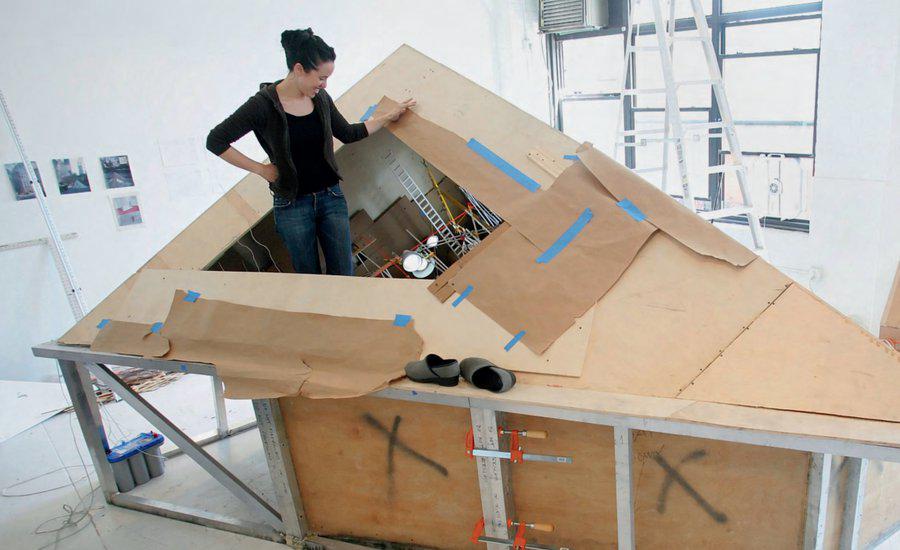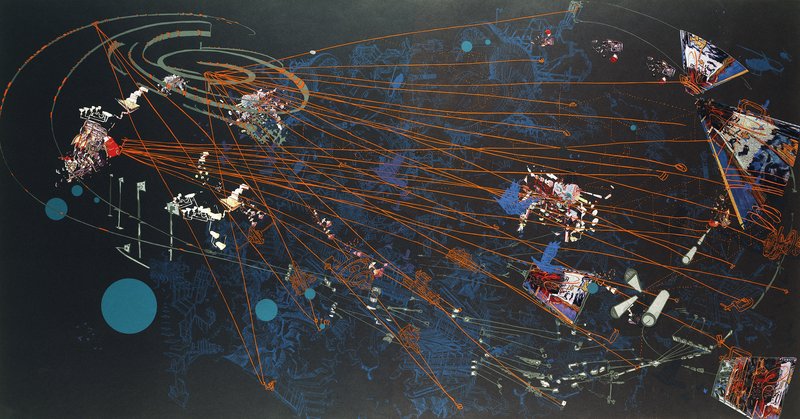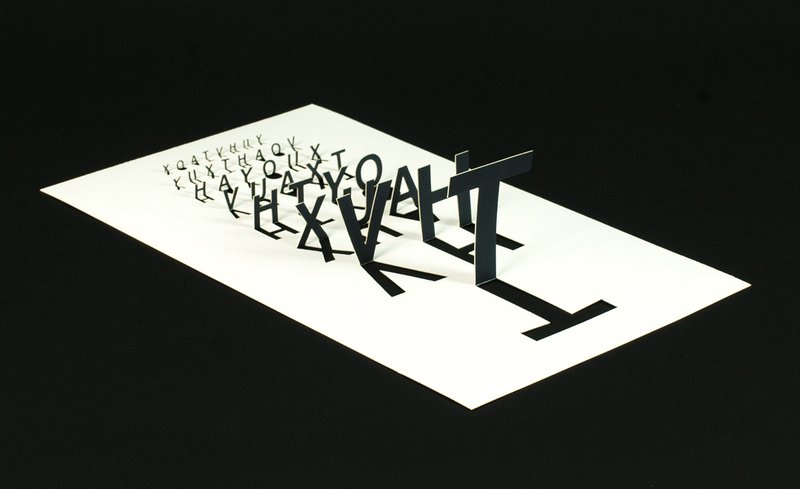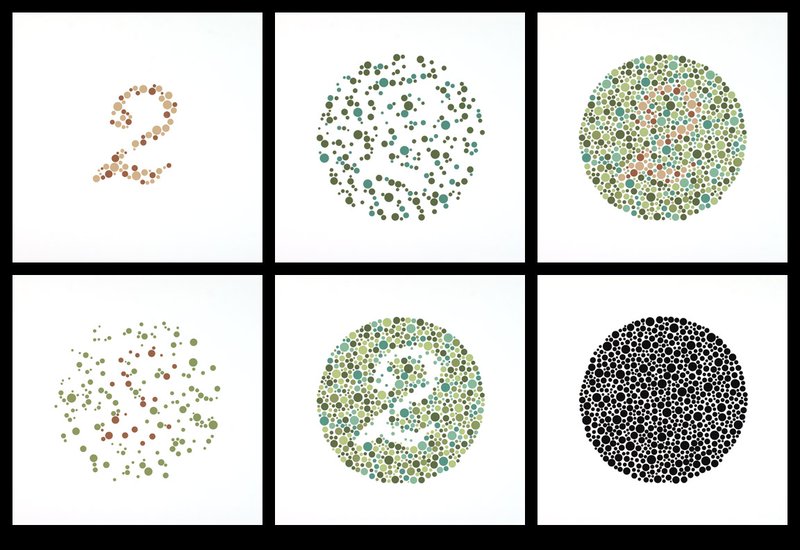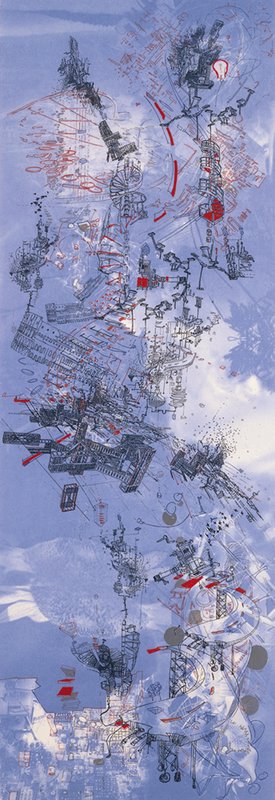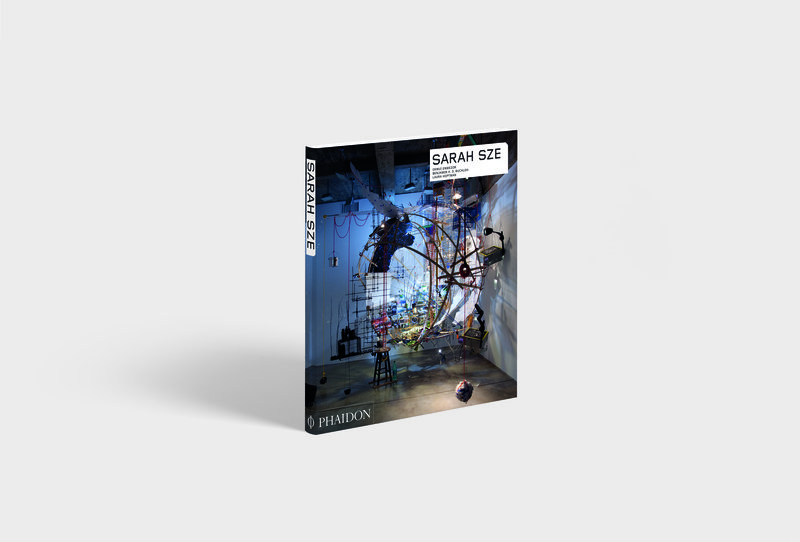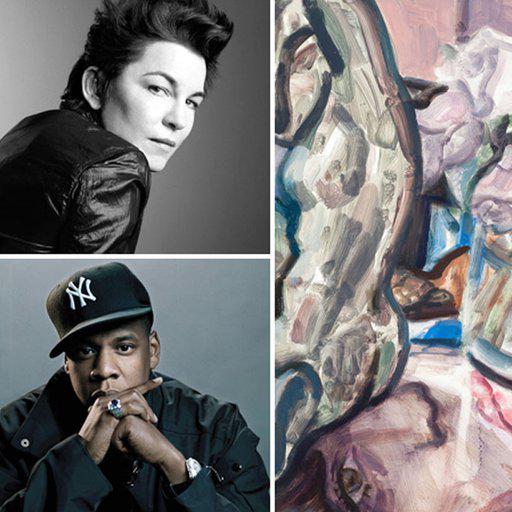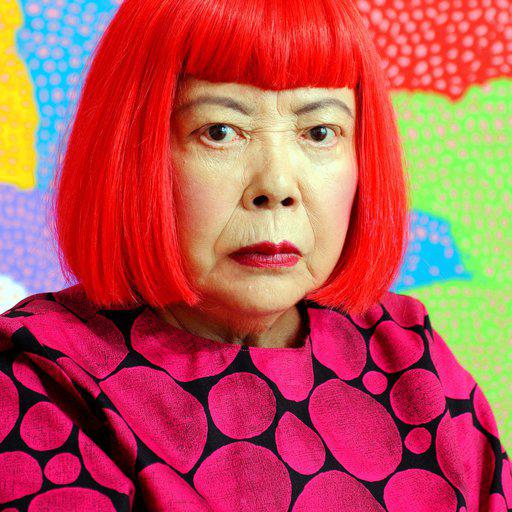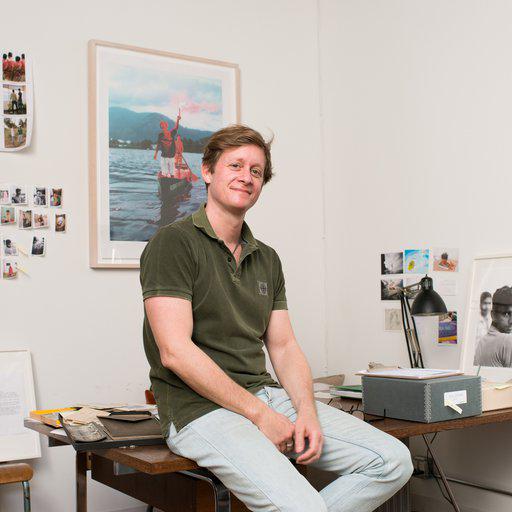Sarah Sze’s site-specific installations transform everyday objects into logic-defying instruments of disorientation. Metal rods, colored string, and other linear materials propel her work’s swirling dynamism while simultaneously linking each disparate element to the grander composition.
“My hope is that the work is constantly shifting, so you read it as one thing, and then it gets lost and you read it as something else, and then that gets lost, so it’s never a set system. The work is expansive rather than conclusive,” the Boston-born, New York resident Sze explains.
Using a range of diverse materials, including cotton buds, tea bags, water bottles, ladders, light bulbs, electric fans, and ticket stubs, her work reflects a Futurism-tinged fascination with conveying movement in static objects and a crafty ability to manipulate scale. In her work, the miniature and the colossal harmoniously cohabitate, responding to and radically altering a given space.
She's interested in the idea that all art can be seen as sculpture. One limited edition print, Images in Debris , depicts time lapse photographs of the sky, taken by Sze, at sunrise and sunset. The images, captured digitally, are then printed via a 4-color screen printing process. Each color separation is screen printed and then smeared while the ink is still wet, foregrounding a handmade process that involves tactility, registration, wetness, and specificity of touch.
Sze ’s work has been featured in numerous prestigious cultural institutions, including the Foundation Cartier pour l’art contemporain in Paris, the Museum of Contemporary Art in Chicago, the Sao Paulo Biennial, the Walker Art Center in Minneapolis, the Asia Society Museum in New York, and the Fabric Workshop and Museum in Philadelphia.
She represented the United States at the 2013 Venice Biennale with an installation, Triple Point, that alluded to scientific and natural processes, transforming the pavilion into a form of playful laboratory.
The late Okwui Enwezor interviewed her for Phaidon's Contemporary Artist Series book Sarah Sze and below we present the edited highlights of that interview.
OKWUI ENWEZOR: Let’s begin by talking about your relationship to sculpture, how you came to build your work in the way in which it has evolved. It seems to me that part of the discourse of your work is to challenge the very material of sculpture, the very constitution of sculpture, as a solid form that has to do with finite geometric constitutions, shapes and content. You appear to begin from the premise of dismantling sculpture and putting its narrative back into something else. How did that come about?
SARAH SZE: When I think about sculpture, I’m thinking as much about the dispersal of objects as the agglomeration of objects, about the absence of form as much as the presence, about the decay of material as much as the construction of material. I approach sculpture as a very fragile constitution that’s always in flux and at risk of ruin structurally, at risk of self-contradiction conceptually. I also think about a sculpture’s existence in relation to what’s experienced before that work and what’s seen after, and a kind of instability that context creates. I believe that’s the real way we experience objects – not in isolation, but amidst a plethora of information. So I’m thinking about how to highlight that when I make a work. How do you make the volatility of an object or a situation become part of the experience?
ENWEZOR:
Indeed, which is always striking when one walks into your installations and your sculptures. I’m often reminded of something that William Kentridge once said to me in relation to the representation of landscape in South Africa. He talked about the difference between driving past the landscape of South Africa in a car and seeing it pictorially, as opposed to driving into it and encountering it somatically, physically. I think this is what your work does: this relationship between the pictorial and the haptic, between landscape as a pictorial construct and landscape as a physical thing that one in a sense encounters, engages with and enters. Is that the way you build your work? It has a very clear pictorial span and yet when you walk into it you can’t take all of it in at once. One enters the zones of the work almost like a feld, a geography, a site of something forming and being dispersed. Yet the work doesn’t feel entropic at all, but is dynamic, constantly over-spilling and breaching all its boundaries, all these microcosmic frames that one has to engage with in each of them. Can you talk a little bit about what that notion of dispersal and atomization means in your particular way of working?
SZE: What William said is beautiful and I think a lot in terms of how we move through the space and the intersection of the architectural and pictorial. When I conceive of a work, I choreograph the experience to create an ebb and flow of information. I’m thinking about how people approach, slow down, stop, perceive. I try and create alternating experiences of location and dislocation. It’s something I’ve always loved about the Cubists, the Russian Constructivists and the Futurists: their attempts to depict the speed and intensity of the moment and the impossibility of its stillness. Landscape design has focused on this kind of choreography for centuries: how do you set up a sequence of spaces that guides viewers, but also lets them get lost and make choices that aren’t planned. The work I did on the Highline park in New York (Still Life with Path [Model for a Habitat], 2011) is a good example. As a structure, the Highline creates an incredible experience of walking in a straight line with no interruptions in the city. I struggled when I was first asked to do a work there because the Highline is so successful as an experience in and of itself, it’s hard to add to that experience and I thought it would be too easy to make a drive-by piece of sculpture that was just plopped down and passed. Then I realized that the work would have to be all about accentuating the promenade. So I made a piece that the promenade bisects, so that the piece is on either side of you as you walk and you become the centre. You see the work in the distance, approach, enter, and let it disappear behind you.
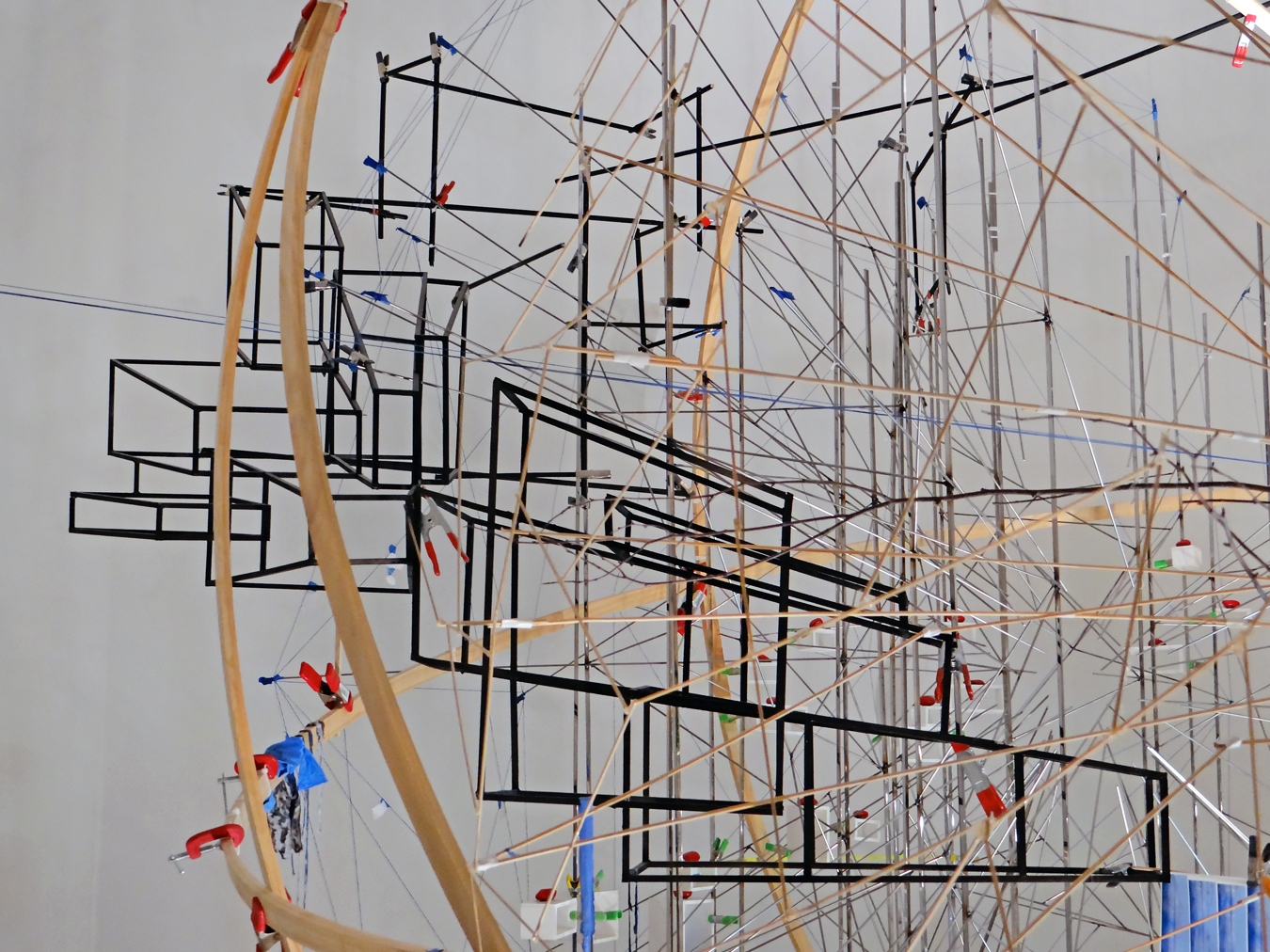
Sarah Sze - USA Pavilion 2013 By Jean-Pierre Dalbéra from Paris, France - photo courtesy Wikimedia Commons
ENWEZOR: One of the important shifts in modern sculpture is the move from fguration to abstraction on the one hand, and the move from abstraction to the sculptural object in the architectural space on the other. Your work begins with this kind of supposition in which the presence of the viewer is no longer defned by the pedestal around which you walk, but the idea that the viewer enters a perceptual space that also has a cultural memory. I’d say yours is a post-Euclidean practice in this sense, and I like this notion of the promenade and the idea of choreography that you talk about because that means that the work is very active. It’s not a docile thing sitting in a room. One has to come to it from the macrocosmic in terms of the entire ensemble, and one has to look at it in terms of the microcosmic because it’s built out of so many details. I’m interested in the laborious nature of the making of a work. How does it start for you? Is it already sketched out, or is it intuitive? Is it process-based? How are you able to bring into a state of coherence, tens of thousands of things in one piece?
SZE: Ideally, I want the work to have the residue of improvisation, a sense that there’s a planned event juxtaposed with gestures that could only be improvisational in the moment. Despite the fact that you’re only witnessing inanimate objects, there’s the strong sense of seeing an act in process, of witnessing behaviour. As you say, it’s not docile. I’m working on sculptures in the studio now that are a series of models of chance occurrences, things you could never actually model, like a model for catharsis, a model for a trick ending, a model for a lost chapter. I imagined these events that we simply can’t model in order to locate a tension between an incredible effort to map, dissect and understand information, and the futility of the effort. They’re inevitable failures as models even before they begin.
ENWEZOR: Immediately present in your works are notions of precariousness and fragility. How do you hold them in balance?
SZE: The holding of things in balance in the work is important. For me, when something is working, it’s doing at least two, if not three things at once. A work should be constantly in a state of flux in terms of how it exists in space, how it exists in time; it should be unclear whether it’s in a process of becoming or a process of entropy. Precarious is such a nice word because usually I think in terms of fragility, but precariousness implies the potential to go somewhere; it implies the tension of the next step. If I can fnd that, then a sculpture is working.
ENWEZOR: I remember the installation you did at the Berlin Biennale in 1998. Was it in the Kunst-Werke?
SZE: It was in Albert Speer’s studio at the Akademie der Künste. I think it doesn’t exist anymore. The whole building was very beautiful. It was at the Brandenburg Gate on the east side of the wall. A derelict, tall space.
ENWEZOR:
I remember starting to think then about the language of your work, because what always struck me is how completely different it is from the work of any other artist that I know. There are artists with the same impulse, but not with the same kind of delicacy. One could also say that your work is fundamentally about drawing: objects are employed to delineate, extend, attenuate and expand spatial perception. Can you talk a little bit about this relationship between different media in your work, which
is installation, architectural, sculptural, pictorial and of course also has this element of drawing, a kind of testing ground for the coordination of thinking and reacting at the same time.
SZE: Yes, absolutely. That’s what’s very nice about drawing. I often talk about painting and architecture in relation to the way I think about sculpture; painting, because it’s a time-related process, architecture because of context and structure. But drawing is so immediate. Drawing is often the frst step of sculpture, of music, of poetry, the first mark, a very simple, very primal frst step. It has the fragility of the touch. It has the immediacy of the hand. And drawing inherently contains a kind of potential, which I think is very important.
ENWEZOR: What about your material, the things with which you build your sculptures? Very often they’re quotidian materials and mass-produced store-bought objects – whether material from hardware stores or offce tools – that are culturally marked. When you’re transforming and translating the materials, is there a predetermined object language you want them to embody? What do you want them to add up to? Because it seems to me that the choices and selections you make in the use of each material implies a code.
SZE: The first requirement for a material is the ability to intrinsically question how value is placed on an object, and how an object acquires value. To do that, I often choose objects that have low value – easily replaceable, mass-produced and with little individual identity. Secondly, the materials I choose are often fragments of a larger system; they’re parts to a whole, but in their new context they’re permitted to take on a different role, a hybrid identity where they recall their original identity but seem to perform a new one at the same time. In the context of a work, these materials are animated through the touch, through the relationships with the objects next to them, through this idea that as a collective they have a kind of ambition, but a fragile, newly-found and absurd ambition. Hopefully, the intimacy is surprising, since their origins are fundamentally generic. Finally, material choices are made by how they signal behaviour: our capacity to collect, to lose, to remember, to understand, to own, to give, to value, to buy, to cultivate, to construct, to grow. They signal and move between all of these roles. I’m less interested in art and more interested in why we make art, and always have been. I like the idea that you might not be sure if a work is a present-day artwork or if it’s a leftover of our civilization.
2: (full color)-(reds)-(greens)-(red & green)-(light & dark green)-(darkest blue), 2011
ENWEZOR: How do the quotidian, recognizable materials that you use appear to you as material for the forms that you create? Because they don’t necessarily imply those forms.
SZE: When I started making sculpture it seemed impossible not to use found objects. We live in this age when if you pick up a pen you realize that to make a pen is an incredible feat. We’re surrounded by phenomenal mass-produced objects all the time and we relate to them in an incredibly casual way until they’re reframed. It’s a Duchampian idea. The quotidian materials appear to me as material for form because they’re all around me, from my bed to my studio. When I sculpt a form (as opposed to using a readymade) such as fabricating a large boulder out of photographs of a boulder, I still want to question the origin and the value of these objects. I don’t separate them from the tools and the leftover scraps in order to raise questions of how objects in the world are made and how they acquire value or meaning.
ENWEZOR: Do you consider yourself a sculptor? Or do you consider yourself an artist who works with what’s at hand? I tend to think of you as a sculptor but I don’t know if this is the way you see your practice.
SZE:
I call myself a sculptor. I think that’s where I discovered my language, where I felt the pull, although I wasn’t trained as a sculptor. I studied architecture and painting. But I’m more interested in how defining the idea of sculpture leads to breaking it down. I’m more interested in the idea that film can be a sculpture, a drawing can be a sculpture, music can be a sculpture. Sculpture creates a base where
you can challenge the identity of anything, but as a defnition it’s not interesting to me.
ENWEZOR: How did you evolve from painter and architect to what you’re making today?
SZE: It’s interesting because I’ve just reinstalled a very early piece (Untitled [Thessaloniki],1997), and with this early work it’s a very simple laying down of objects on the foor. For me, it was a gesture related to David Hammons’ snowball piece, or the candy-pile pieces of Felix González Torres: this idea of a recognizable object, but a transient gesture. That idea of transience was very important to me when I started making sculpture. And I guess also the simple idea of marking space: how to take an object and use it to mark a space, to colonize a place, to change everything around it, to place a number of objects on the pavement in Chelsea, as in the piece I just mentioned, and to see how slight that move can be yet suddenly it shifts our relationships to everything around it. I think the Berlin Biennale piece that you saw was very important because it was the frst piece that really engaged with the space and actually dealt with gravity and sculpture in the round. It’s very much a sculpture in a more traditional structural sense; it dealt with weight, construction, entropy. Gravity as a tool is interesting because it deals with something real, something operative. When you look at an artwork, the idea of what’s real is an old question. But we know that gravity is real. So you can play with sculpture and know it has to obey the laws of gravity at the very least.
ENWEZOR: So in a sense your work operates in the terrain of classical sculpture, which is weight, mass, scale and geometry; how these elements defne very specifc spatial relations and so on. What do you see as the status of sculpture today?
SZE: It’s evident we’re living in a time period in which the experience of time and space is radically accelerating before our eyes. We have an acute awareness every day – with the constant upgrades and innovations in technology that immediately touch our lives – that how we experience time and space is shifting and changing at an exponential rate. For example, I have graduate students who suffer from a phenomenon of deep-sleep deprivation because someone wakes up at 4:00 in the morning, goes online to fnd out if anyone else is up, fnds a few friends, and they have a gathering. The next day, other people hear about it, don’t want to miss out, and more people wake up to meet again at 4:00 in the morning, and this goes on with large groups waking to meet in this newly created space and time. Locating yourself in time and space is incredibly complex right now in operative ways that are hard to predict. I think sculpture has to address this volatility of place, because amidst the travelling through time, space and information that has become so facile, sculpture can cultivate what sculpture can do like nothing else: it can cultivate the value of a concrete experience in space, in real time.
ENWEZOR: I’m often confronted with the notion of the demand that you place on the viewer or the audience, perhaps even the institution: the demand for care, the demand for slowness and for a certain kind of behavioural modifcation that one has to make when approaching the work. It’s not dangerous work, but there is a demand for care. And that immediately locates the work in a particular type of psychological context. Why do you do that?
SZE: This idea that there’s care, that there’s tenderness, that there’s intimacy, and that there’s a longing for that care is an important idea in and of itself. Very rarely are things broken or destroyed in the work. Take, for example, Triple Point at the Venice Biennale in 2013: the number of people who went through that piece was incredible. Hundreds of thousands and there was only one time where some kind of damage control was needed. I’m conscious of this idea that one recognizes how the work might be made; one understands the fragility and the labour intuitively. The labour translates, and as a result people slow down because they understand the behaviour, the labour. The other thing that’s interesting is, I’ve never had things taken from my work, but what I have had often is people leaving things – they add. The things left are often so close to the vocabulary of the work that people who work in the museum or institution don’t even recognize the additions.
ENWEZOR: Being invited to represent the United States in the pavilion at Venice is of high value both culturally and symbolically; it’s an acknowledgement of the artist’s emergence, and I think you’re probably one of the youngest to be invited to undertake this representation, and one of the few women in a long time. What came to your mind when you got the call? What were you going to do in the pavilion? What was your starting point in terms of your conceptual framework to tackle this mini-Monticello?
SZE: Tackling that building was something that I’d been thinking about for a while. In 1999 I made a work for the Biennale group show with Harald Szeemann and I worked with an assistant who’d been a former assistant of Ann Hamilton, the US representative that year. We went over to the American pavilion frequently and saw her work in the process of being made. After that experience, I was nominated three times and in the US, when you’re nominated you develop a whole proposal, so by 2013 I was on my fourth proposal. So I had thought about that mini-Monticello a lot. My own opinion about the American pavilion building is that it’s awkward in many ways. It clearly emulates a Palladian structure, and Palladio’s Villa Rotunda is only forty minutes away. The Villa Rotunda has a sort of a Catholic church scale; Palladio was the frst to the take the basilica from the church and put it on a domestic building. In the American translation of that structure, the scale was reduced and became awkward, sort of Protestant, even Calvinist. It was wrong for that kind of grand architecture. Monticello also has a very strange scale. And have you been to the White House? Again, a strange American Palladian scale.
ENWEZOR: No, I’ve never been inside the White House.
SZE: Everything is shrunk down, which makes all the grandness of the columns and the scale proportionally askew. You feel like you can just peel the front columns right off. The only ornamentation on the inside of the building is the compass rose on the foor, which orients you immediately. It’s the Palladian ideal that the building frames you upon entry and you’re at the centre of the earth. I wanted to take that hierarchical organization of space and turn the whole idea on its head, to make the experience one of disorienting/orienting the viewer through the space. I also wanted to address the structural and historical reality of that awkward building. In the 1970s, the left wing was slashed open and replaced with a wall of glass, in a gesture that was entirely at odds with the original rigorous symmetry and hierarchy of the building. It brought in a sort of horizontality, a different kind of organization of space championed by architects like Frank Lloyd Wright or Philip Johnson, accentuating linearity and the horizon. But I loved the messiness of the building’s bizarre history. Since that strange renovation in the 1970s, they’ve landmarked the building, so nothing else can be done to change it and it remains in this strange state. The vast majority of artists and architects before now have covered that wall with a fake one to try and hide the horizontal window. For me, I wanted to make it central; it was this wonderful, almost readymade Gordon Matta-Clark moment and I wanted to highlight the reality of it, not disguise it.
ENWEZOR: Was this the largest installation you’ve ever engineered or have there been others?
SZE:
I like to play with making something very slight hold a spectacular space. I’m not sure how to measure it in terms of size. I’ve defnitely worked in larger spaces, but in terms of sequencing, the Venice installation was certainly by far the most complex. I had the opportunity to create a vocabulary and let it evolve over space and time in the pavilion. This idea of unravelling what’s real and what’s not real is part
of that vocabulary, and an example of a concept that you saw evolving in real time in the space.
Sarah Sze - Contemporary Artist Series Phaidon Book
ENWEZOR:
Of course you’re right, size and scale, big or small, that’s not the question. The point is to dive into the experience of the ensemble of ideas that one really has to negotiate while moving through the building. Entering the Venice installation was almost like entering a perception machine, or the laboratory of a mad scientist. But it’s very well ordered. There’s a kind of taxonomic trail that’s very clear in the exhibition.
SZE: During the process of installing, the last room actually functioned as the studio and workroom for the other rooms. As things progressed, I would sometimes stop an activity mid-process and leave it. So that room was flled with evidence of the making of the work itself. Duchamp, as you probably know, kept one studio where he received people for studio visits and claimed to have retired from making work, while at the same time maintaining an entirely separate studio where he actually worked for years on Étant donnés in secret. The last room in the pavilion was arguably contrived, because it was stopped and saved and then presented as evidence for the viewer, but the room did actually act as the studio for the work on site and became an opportunity to point to the laboratory of ideas behind the work. The space provided a great opportunity to create a complex series of rooms that could be linked over time, and create a narrative from one room to the next. By having visitors enter through an emergency-exit door, I created a circulation where I knew exactly what you’d see before and after each piece. It was really in the transitions from one room to the next that the meaning was created. It’s a very flmic idea: the meaning happens in the edit. It’s not the raw footage or material, but how you edit it, what happens between the frames. That moment of emptiness is actually where the meaning happens.
I also thought about a classic narrative structure in writing where you understand the beginning of a novel anew when you reach the end. With the pavilion, the sequence begins outside the building, when you see the garden. And then it ends again with the garden, but seen from the interior, where you’re given an entirely new perspective. So the experience ends with a new understanding of the beginning. This sense of a finale was heightened because you came into that room and the mirrors created the sensation that the horizon surrounded you, and your eye moved with agility out to deep space. You could go very quickly from something tiny, from a pebble, to something massive like a boulder. In contemplating how to project the space through the window I learned a lot from painters like Matisse and Vermeer, who loved to play with the window. Matisse used windows as frames within frames, stepping out of the interior to the exterior. Vermeer’s windows are compositional jumping-off points in deep space, where the eye moves from a milk bottle to a map of the world, out of a window to the sky. I also learned from architecture and played with the signifcance of the threshold, that very precise line between indoors and outdoors. For architecture one could argue that this is the most important moment: when you leave or when you enter. So I had the opportunity to really play with that, the exterior and the interior. My original idea was to create an indoor studio that felt exterior and an interior studio that felt exterior, and that you’re suddenly in a very volatile space and had to re-centre yourself.
ENWEZOR: Are there artists working today whom you feel are asking similar questions or addressing key ideas that link art and social life, what Arjun Appadurai called the social life of things, especially within the larger cultural context of contemporary art?
SZE: That’s an interesting question. I think most artists are in one way or another playing with the social life of things. I was going to say Adrián Villar Rojas, but his work isn’t as much about things or objects is it? So many artists are in some way playing with the way in which people fnd value in objects and how objects give value to social relations: Rirkrit Tiravanija, Fischli and Weiss, Urs Fischer, Isa Genzken, Jeremy Deller, Rosemary Trockel, David Hammons, Thomas Hirschhorn, Doris Salcedo, Jimmie Durham, Gabriel Orozco, Mark Manders, Robert Gober, Kara Walker in her last show. I think the question is, who doesn’t? It’s the language of contemporary living, isn’t it?
RELATED STORIES
INTERVIEW: Chris Levine on photographing the Queen, Naomi Campbell and the Dalai Lama
Wilhelm Sasnal's Lockdown Listening
10 Artspace Artworks We Chose For Our Zoom Backgrounds
Come On Our Virtual Studio Visit With Hormazd Narielwalla
Amazing Artists who Worked Best in Isolation
The Artspace Group Show: Contemporary Landscapes
What to Say About Your New Katherine Bernhardt Print
INTERVIEW: Yayoi Kusama on 60s New York, Mental Illness and Feminist Art











